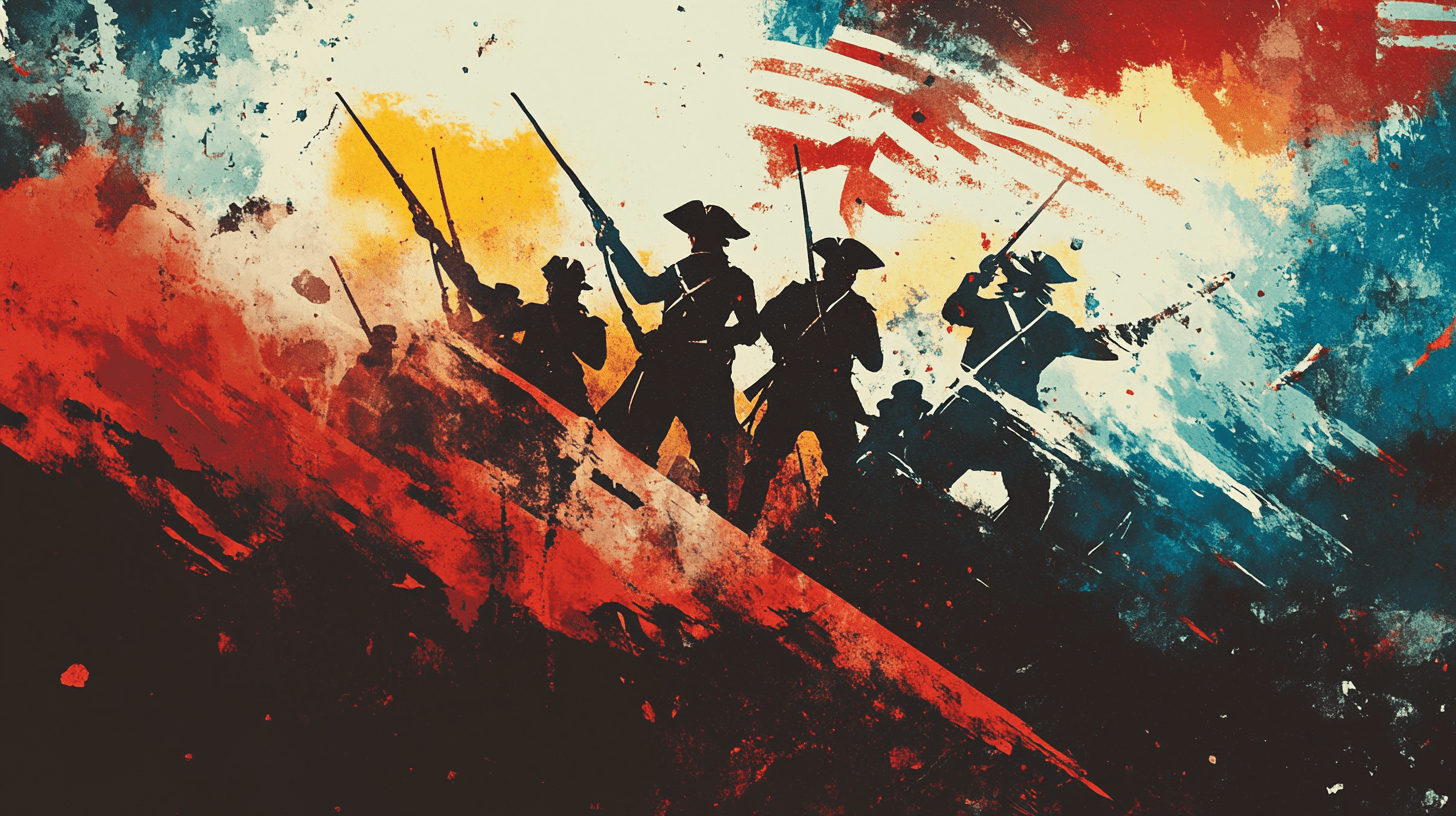The American Revolution was fueled by powerful words that ignited the passion and resolve of a nation seeking freedom. From battlefield speeches to stirring proclamations, these quotes inspired unity and courage in the face of impossible odds. Here are ten unforgettable quotes that sparked the spirit of independence and changed the course of history.
Benjamin Franklin, 1754
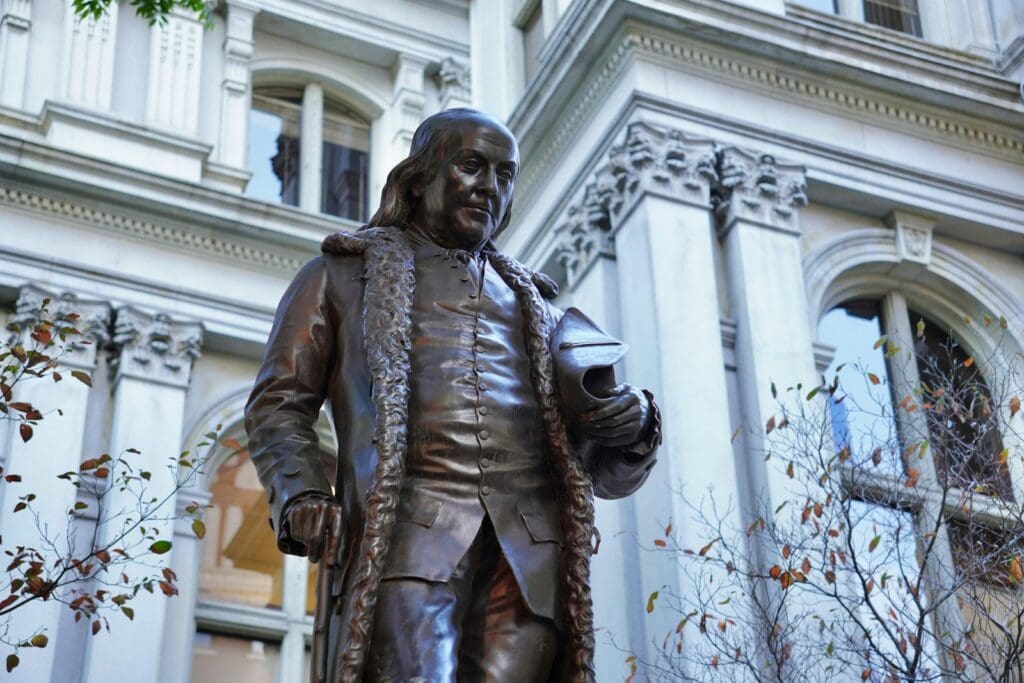
“Join, or Die.”
In 1754, Benjamin Franklin’s iconic “JOIN, or DIE” cartoon, featuring a divided rattlesnake, became America’s first political cartoon, urging colonial unity. Originally published to rally support during the French and Indian War, it reemerged in the Revolution as a powerful call for unity against British rule. The rattlesnake symbol soon represented American resistance, appearing on key flags of the Revolutionary War.
Patrick Henry, 1775
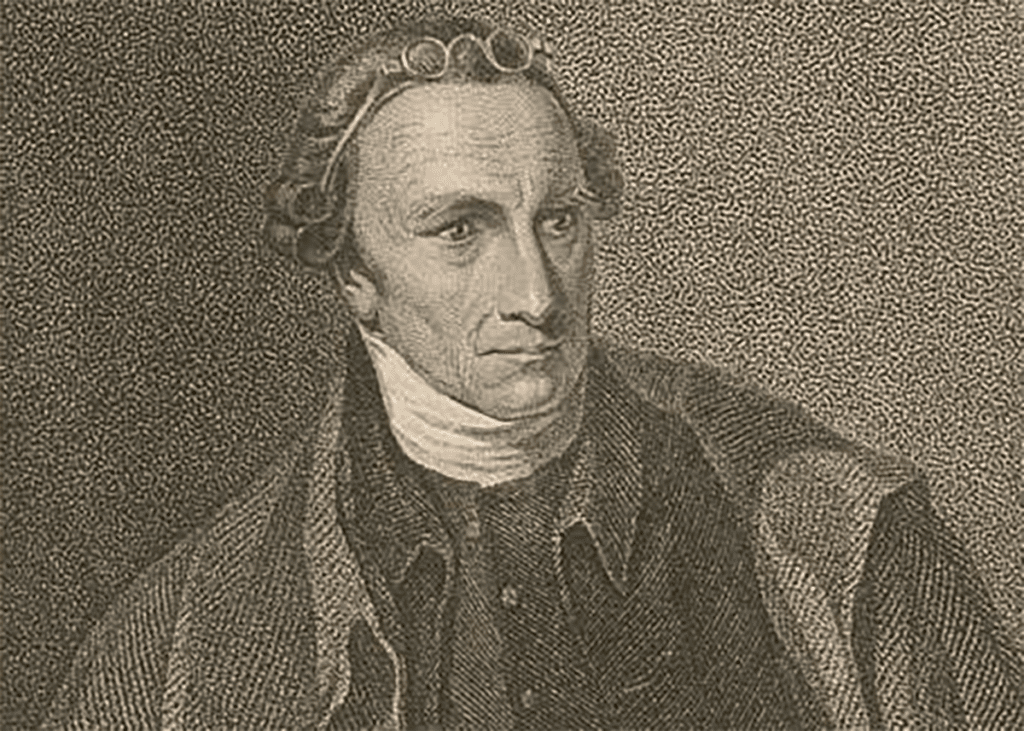
“Give me liberty or give me death!”
Patrick Henry’s fiery words, “Give me liberty or give me death!” rallied Americans against British tyranny and became a rallying cry for independence. His passionate speech at the Second Virginia Convention in 1775 urged the colonies to prepare for war, inspiring a move from peace-seeking to armed resistance. Henry’s resolve and leadership spurred the mobilization of Virginia’s militia, symbolizing America’s unyielding fight for freedom.
Israel Putnam, 1775
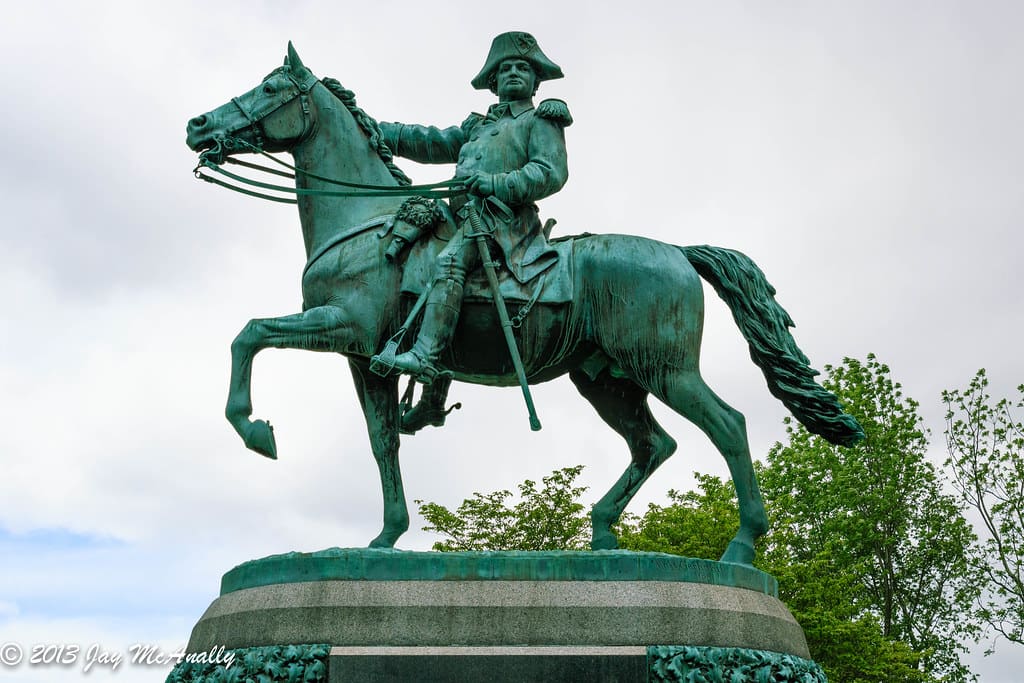
“Men, you are all marksmen – don’t one of you fire until you see the whites of their eyes. Then fire low!”
At the Battle of Bunker Hill, General Israel Putnam is famously attributed with the command, “Don’t fire until you see the whites of their eyes,” a call to conserve ammunition due to limited supplies. Though possibly a legend, this line symbolizes American grit, as colonial forces held their ground and fought fiercely despite being outnumbered. The battle showcased the resolve of the American troops, surprising the British and becoming a powerful emblem of Revolutionary determination.
The Gadsden Flag, 1775
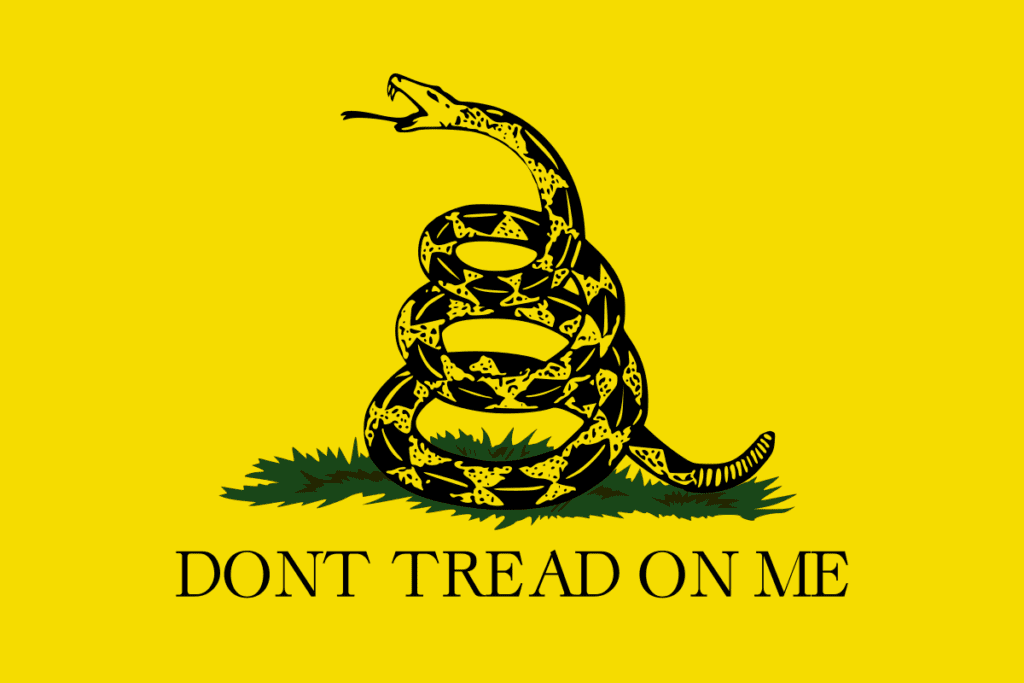
“Don’t tread on me.”
The iconic phrase “Don’t tread on me,” featured on the Gadsden Flag, was designed by Christopher Gadsden in 1775 for the Continental Navy. This flag, with its coiled rattlesnake ready to strike, symbolized American defiance, self-defense, and resistance against British oppression. Gadsden’s bold statement captured the Revolutionary spirit, making the rattlesnake a lasting symbol of American independence.
Captain John Parker, 1775
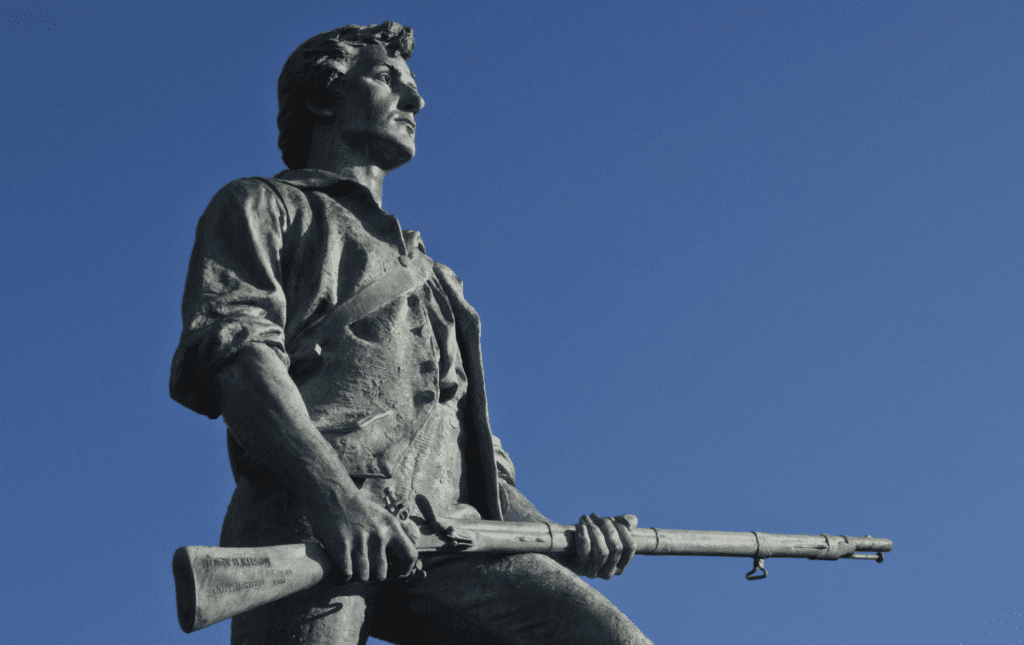
“Stand your ground; don’t fire unless fired upon, but if they mean to have a war, let it begin here.”
At the dawn of the American Revolution, many Patriots, including Captain John Parker, were hesitant to engage in full conflict with the British. At the Battle of Lexington on April 19, 1775, Parker reportedly ordered his militia to hold fire as British troops arrived, reflecting this initial restraint. However, the encounter quickly escalated, leading to the first clashes of the Revolutionary War and marking the shift from resistance to open rebellion.
Nathan Hale, 1776
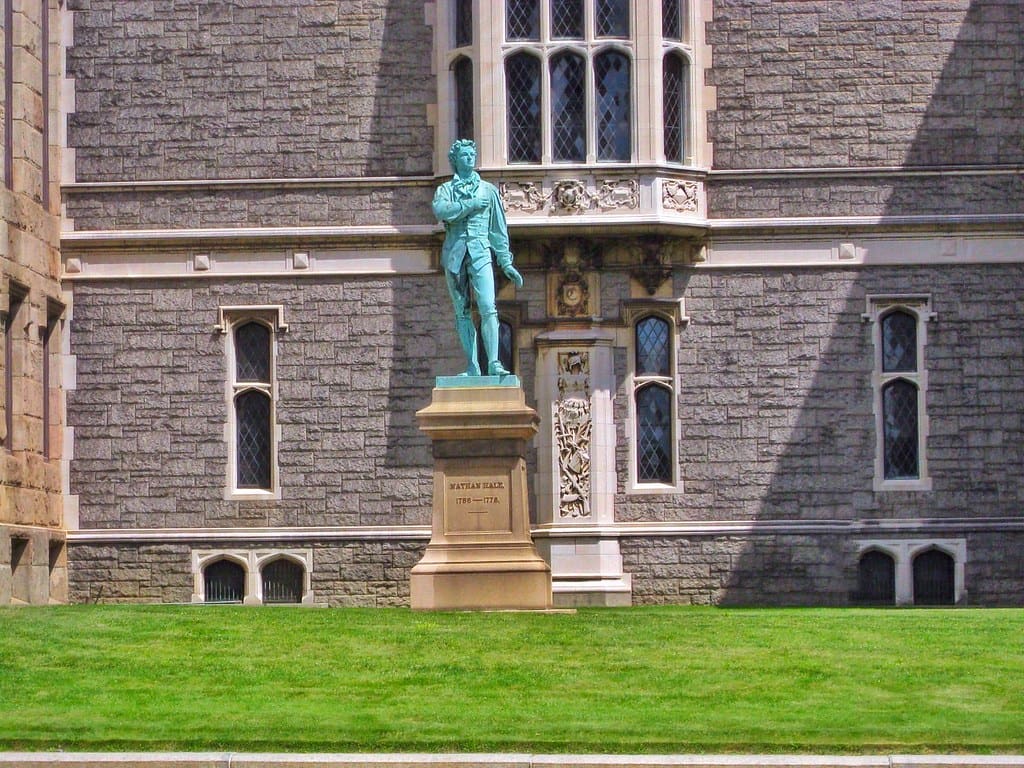
“I only regret that I have but one life to lose for my country.”
Captain Nathan Hale of the Continental Army, hailed from Connecticut, bravely volunteered to spy on British forces in 1776 at George Washington’s request. Captured and sentenced to death, he is remembered for his stirring last words: “I only regret that I have but one life to lose for my country.” Today, Hale’s courage and sacrifice make him a celebrated hero of the American Revolution.
Declaration of Independence, 1776
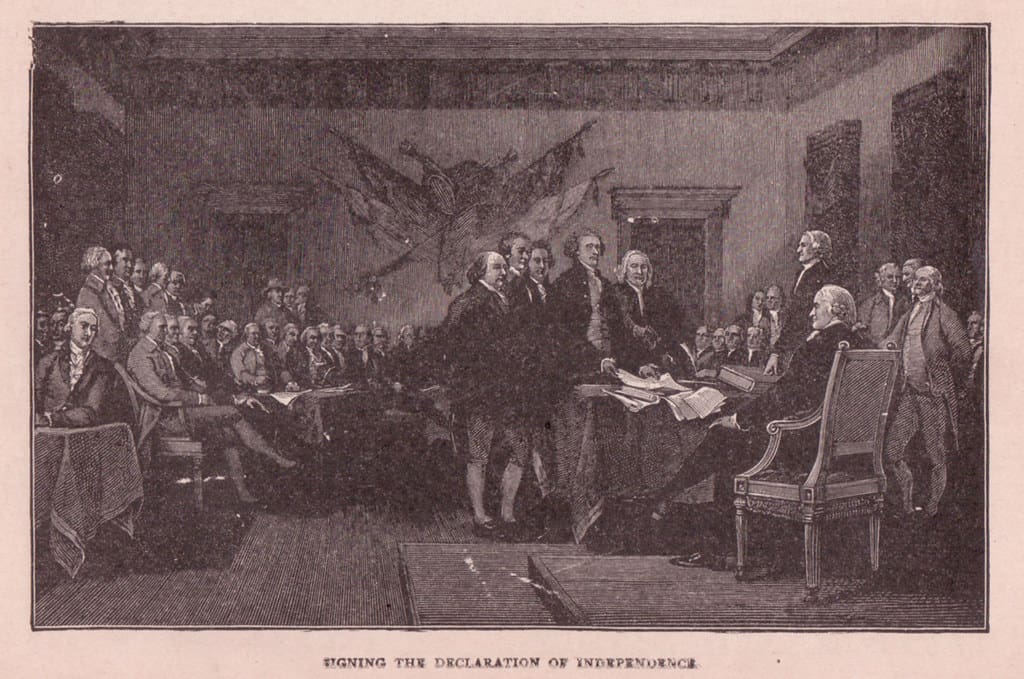
“We hold these truths to be self-evident, that all men are created equal, that they are endowed by their Creator with certain unalienable Rights, that among these are Life, Liberty and the pursuit of Happiness.”
The Declaration of Independence, finalized on July 4, 1776, boldly asserted America’s ideals with the famous line, “We hold these truths to be self-evident.” Crafted by Thomas Jefferson and revised by Benjamin Franklin, this iconic statement outlined the values of a new nation, standing for freedom and equality. The document, supported by leaders like Jefferson, Franklin, and Adams, remains a powerful symbol of American independence and ideals.
Thomas Paine, 1776
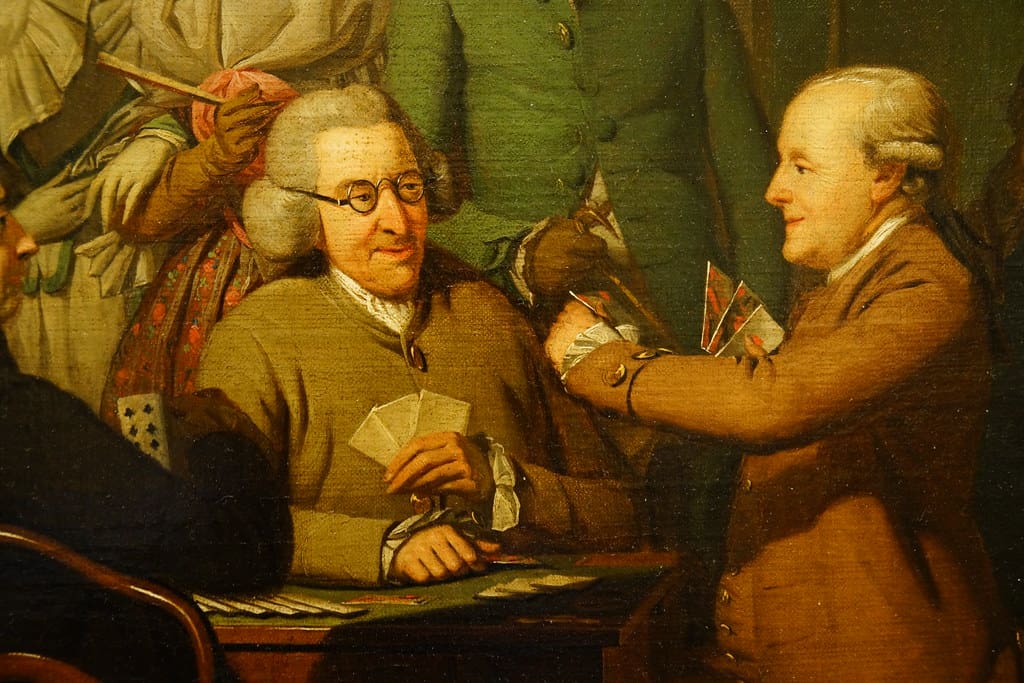
“These are the times that try men’s souls. The summer soldier and the sunshine patriot will, in this crisis, shrink from the service of their country; but he that stands by it now, deserves the love and thanks of man and woman.”
Thomas Paine’s The Crisis, first published on December 23, 1776, was a powerful call for resilience during the bleakest days of the American Revolution. His line about “summer soldiers and sunshine patriots” urged Americans to stand firm, even in hardship. Paine’s stirring words boosted morale, inspiring both soldiers and civilians to persevere in the fight for independence.
Related: Uncovering the Real History of Thanksgiving
Benjamin Franklin, 1776
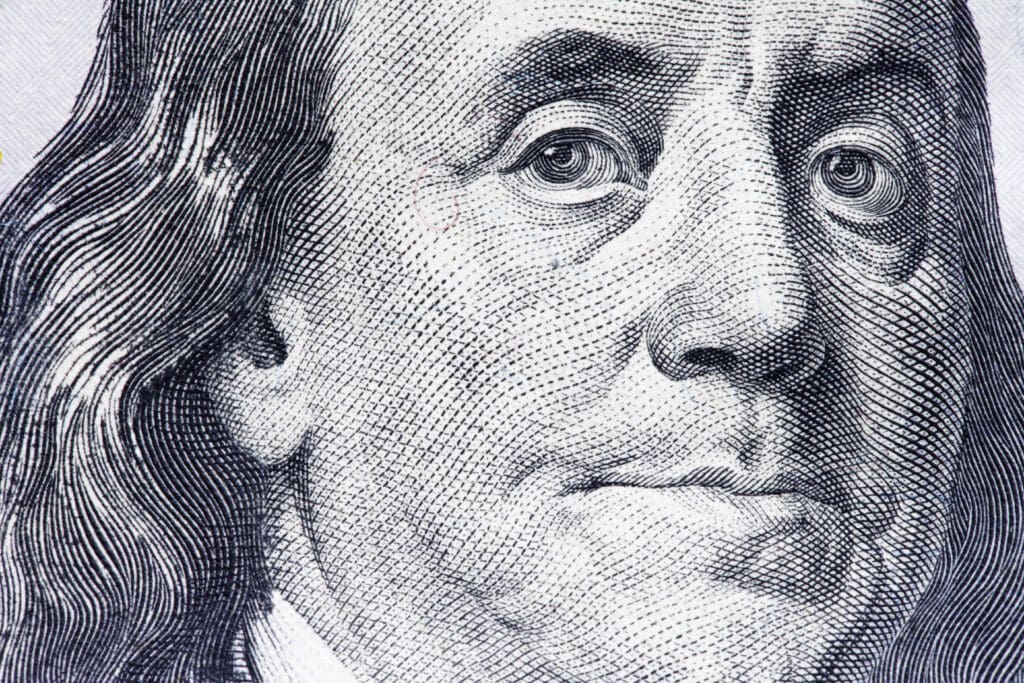
“We must all hang together, or assuredly we shall all hang separately.”
When the Declaration of Independence was signed on July 4, 1776, the Founding Fathers risked execution for treason against Britain. Benjamin Franklin reportedly reminded his fellow delegates of their shared commitment by saying, “We must all hang together, or assuredly we shall all hang separately.” His words highlighted the unity needed to secure America’s independence, despite the grave risks they faced.
Related: 17 Remarkable Facts About the History of Beer
John Paul Jones, 1779
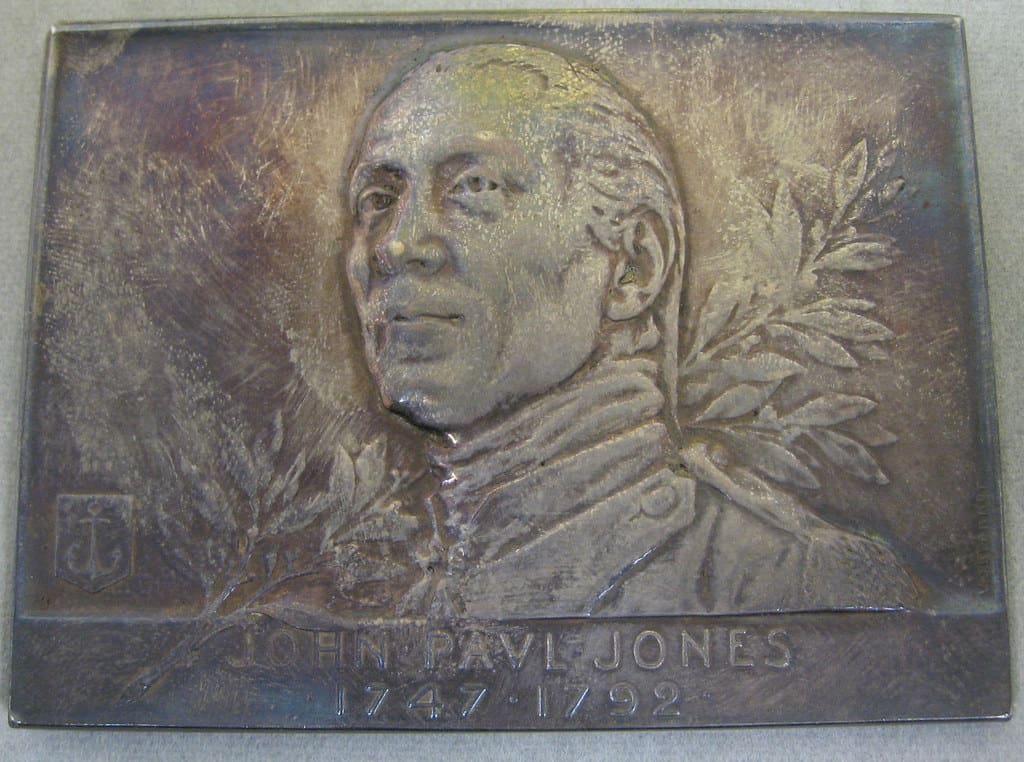
“I have not yet begun to fight!”
Captain John Paul Jones, a legendary naval leader of the American Revolution, boldly took the fight to British shores, outmatching a stronger British Navy. In the iconic 1779 battle against the HMS Serapis, when asked to surrender, Jones famously replied, “I have not yet begun to fight!” After capturing the Serapis, he sailed it, with British prisoners aboard, to safety in the Dutch port of Texel, cementing his heroic legacy.
Related: 27 “Facts” from History That Have Been Debunked

